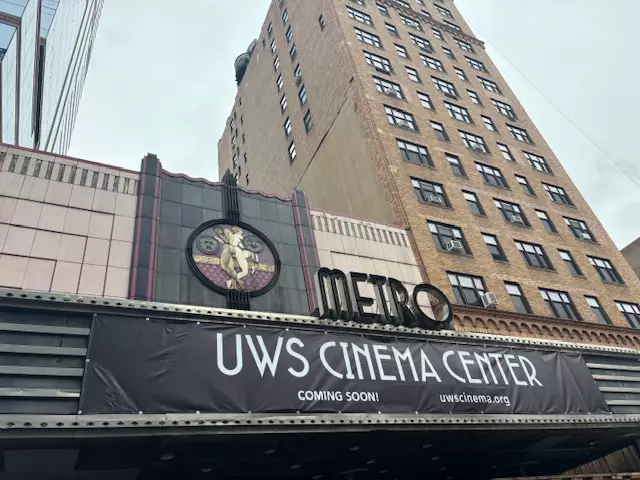In an era where the allure of traditional theaters is increasingly eclipsed by the convenience of streaming platforms, the redevelopment of the dated Metro Theater into a five-screen arthouse venue offers a refreshing glimmer of hope for enthusiasts of film culture. Funded through a mixture of public grants and private donations, the project, spearheaded by the newly established Upper West Side Cinema Center, is placing a $22 million bet on the future of community-centered cinema. With the steady decline of independent theaters in the Upper West Side, which has been labeled a “cinema desert,” this ambitious initiative could be a game-changer. The project isn’t just about film; it’s a bold act of cultural revival aimed at stitching a fragmented community back together.
Philanthropy Meets Passion
At the heart of this initiative is producer Ira Deutchman, whose vision alongside co-founder Adeline Monzier is not only to entertain but also to educate and uplift. This endeavor is made possible through substantial grants from New York state and noteworthy contributions from the likes of Steven Spielberg and Kate Capshaw’s Hearthland Foundation. While some skeptics may question the viability of such a project in a world pointing towards digital consumption, the fervent support from local residents, filmmakers, and even high-profile advisory figures signals a strong undercurrent of demand for a return to cinematic experiences that transcend mere convenience. This is less of a spontaneous financial shot in the dark and more of a calculated manifestation of a desperate yearning for artistic expression and communal gathering.
A Renaissance for the Upper West Side
The essence of this revitalization extends beyond just the physical space. The Metro Theater, once a beacon of artistic vibrancy, yielded to neglect after its closure two decades ago. Its restoration is, in many ways, a restoration of cultural identity for the neighborhood. Deutchman poignantly remarks that the theater has loomed as a “silent reminder” of what has been lost—a shared cultural space where diverse stories converged. In a city known for its diversity and vibrancy, the lack of a traditional theater to experience independent and international cinema was alarmingly stark. The imminent reopening of this art deco masterpiece will not only address the gap in cinematic offerings but also rejuvenate the community spirit that has withered away.
Community Support: A Crucial Element
Sustained community engagement is a vital ingredient in the recipe for success of this arthouse project. The backing from local advocacy groups and neighborhood residents showcases a collective desire to reclaim shared public spaces. Influential figures like Martin Scorsese and Frances McDormand stepping in as advisors underscores the urgent need for a cultural bastion that champions independent cinema. This outpouring of support cannot be understated; it’s a testament to the power of communal efforts in effecting meaningful change. In a climate often riddled with cynicism, the Upper West Side Cinema Center’s initiative embodies the potential for grassroots activism to shape local culture.
A Vision with a Broader Implication
However, the success of this venture could serve as a crucial indicator of the broader implications of cinema in urban life. The deteriorated status of traditional theaters reflects not solely an economic downturn but a societal change—where communal experiences are gradually fading. People increasingly retreat into their digital spheres, but the allure of shared storytelling has not vanished; it is simply awaiting reinstatement. Reopening the Metro Theater will essentially act as a catalyst for re-igniting interest in communal gathering spaces where films are not just viewed but experienced collectively, fostering connections that enrich the community.
Financial Prudence or Cultural Necessity?
Now, the crux of the matter lies in execution. With funding ranging between $15 million and $22 million, the journey seems both daunting and optimistic. The Upper West Side Cinema Center must not only secure the remainder of the funds but also ensure that the renovation meets the contemporary demands of cinematic audiences while honoring the historic integrity of the venue. This dual commitment to honoring the past while looking toward the future forms the essential fabric of its mission. The risk is considerable; yet, the potential rewards through revived communal engagement and cultural education are vast, suggesting that this initiative may well represent a cultural necessity rather than merely an ambitious financial gamble.
In a rapidly changing world infused with digital distractions, the quest to reclaim a beloved community venue isn’t just about showing films. It becomes a profound statement on the values we hold dear—collaboration, culture, and shared narratives—amidst a backdrop of isolation. The reimagining of this theater is emblematic of a longing for connection that resonates deeply in both the local context and our larger societal landscape.

